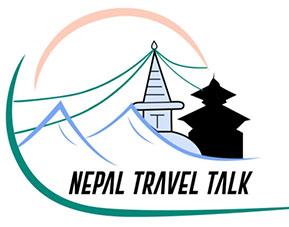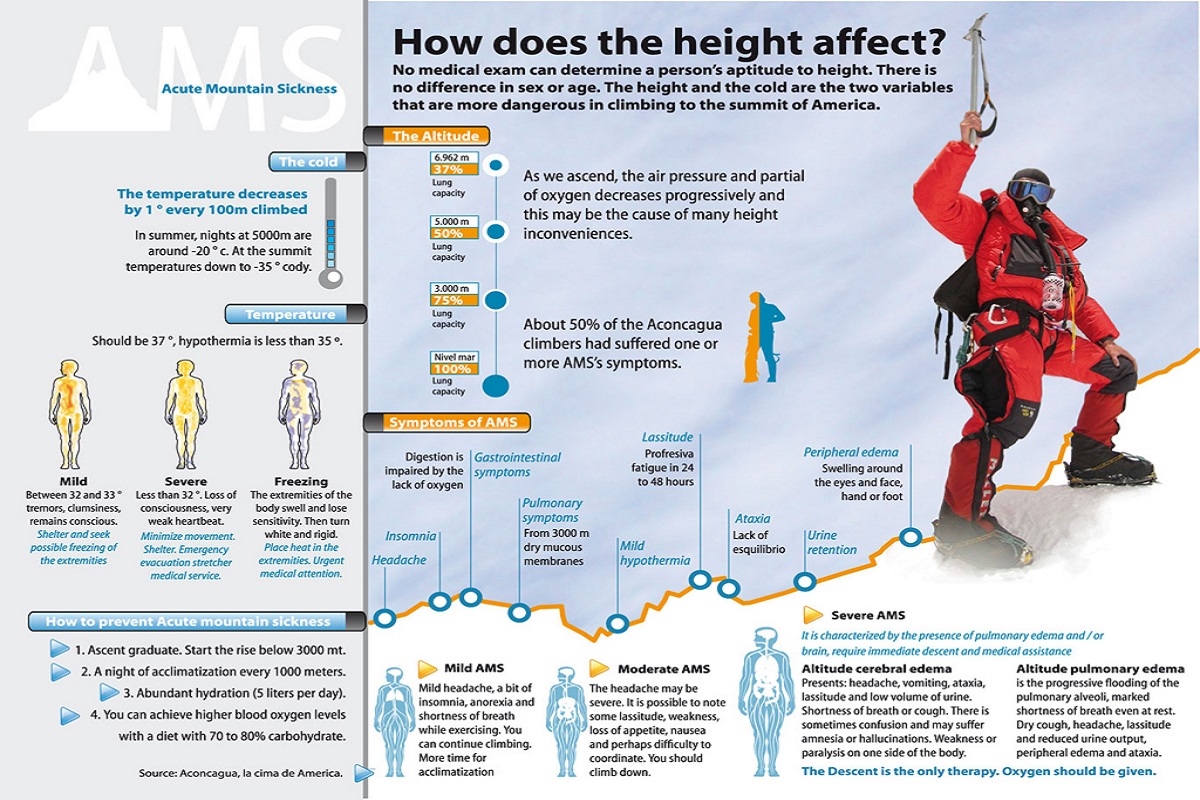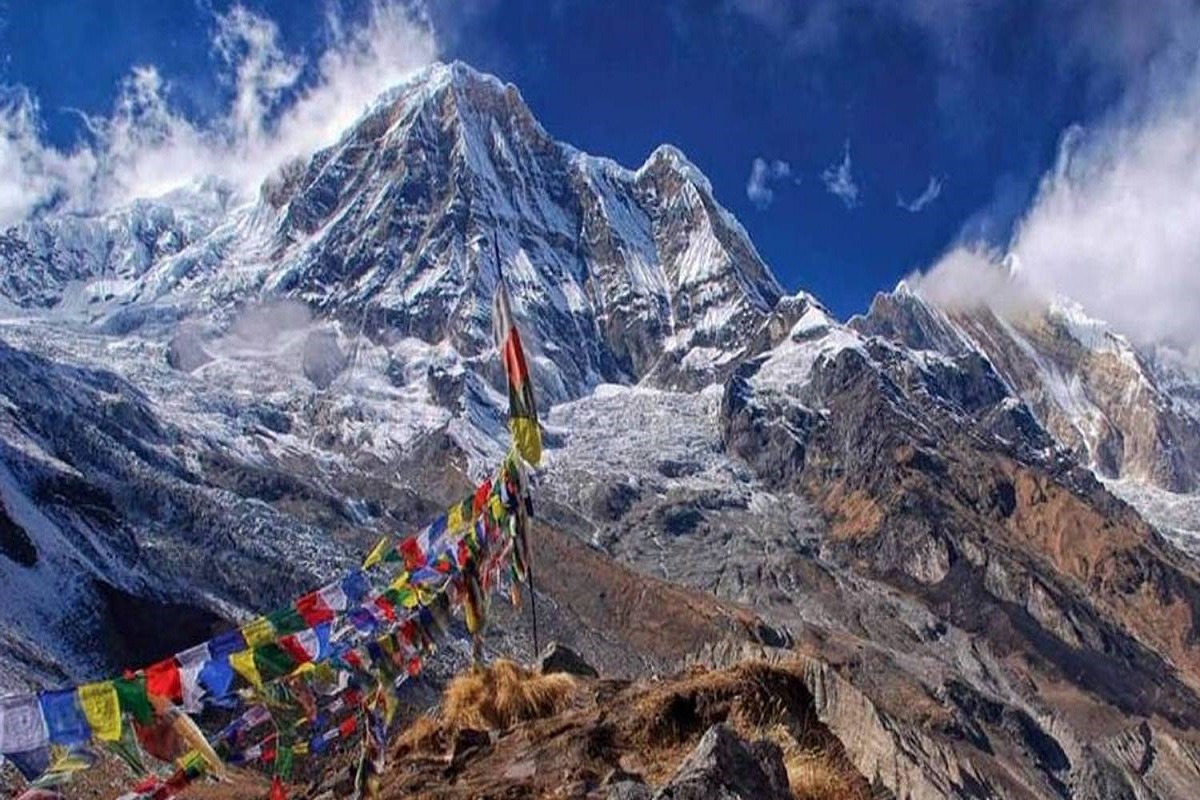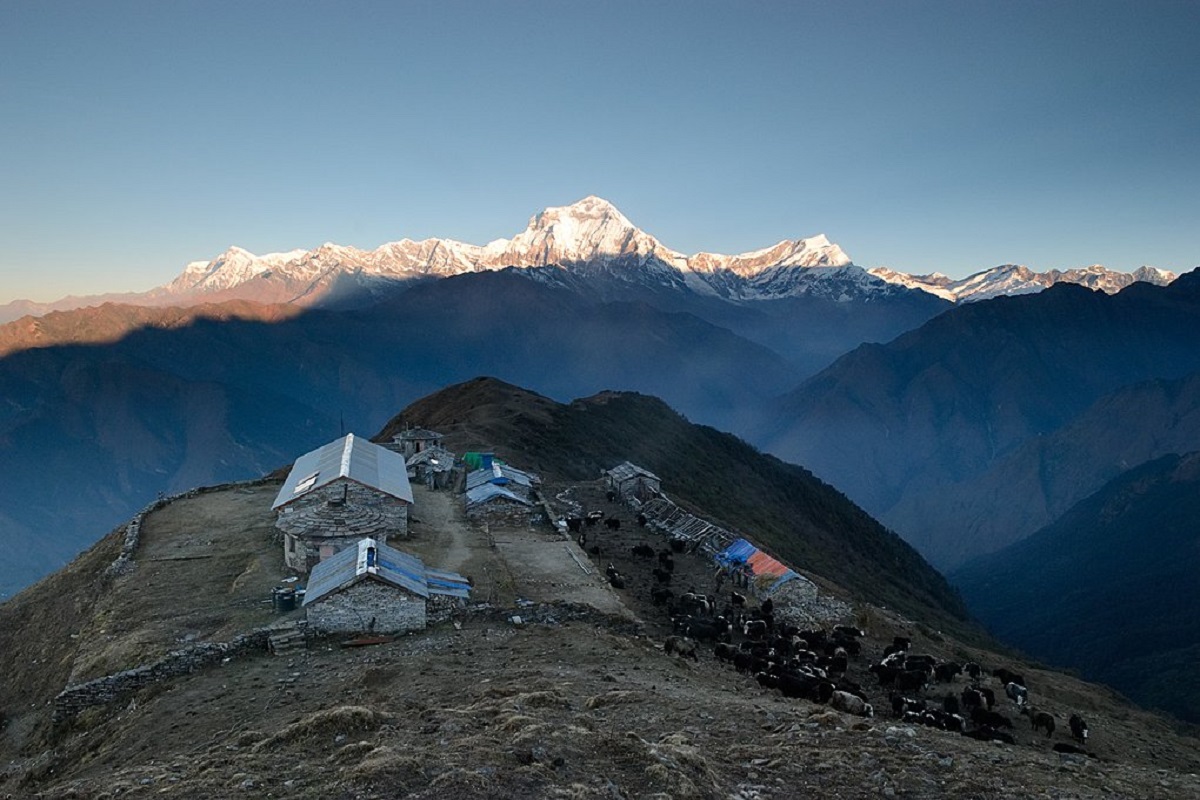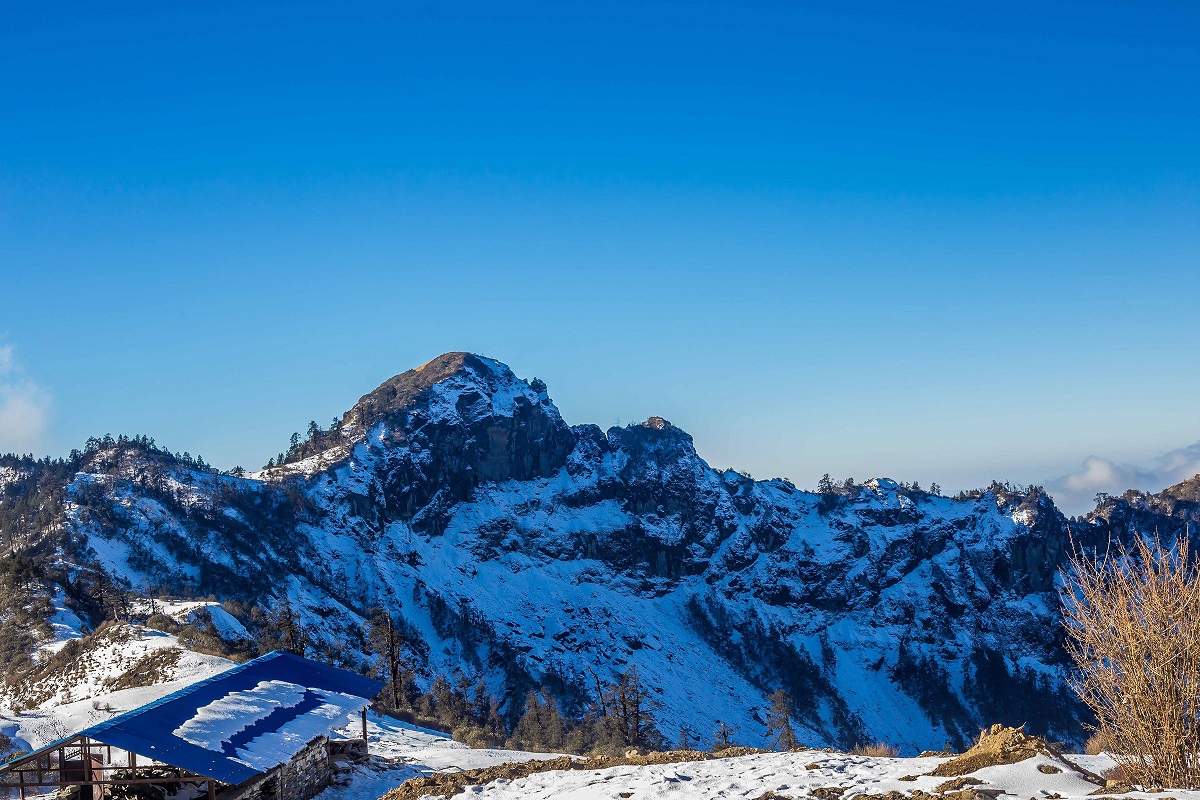Hill stations have many things to offer from majestic views of Himalayan peaks, local culture to pristine nature. That is why I regularly visit famous hill stations of Nepal whether it is in winter or summer. Famous hill station in Nepal some hill stations require long days of travel or trekking while others are well connected by road.
Exploring famous Hill stations in Nepal, today is as easy as ever. There are facilities of vehicles in many places now making it comfortable and easy for travellers. The beauty and charm of hill stations still remain as alluring as before. Some of the famous Hill stations in Nepal not to be missed during your visit to Nepal have been listed below.
Chandragiri (2551m)
Chanragiri is tallest hill on the southwest of Kathmandu. It
a great vantage point to see 180 degree view of snowcapped peaks from Mt.
Everest and Annapurna to Langtang and Ganesh Himal ranges. It is just 14 km
from Kathmandu. A few minutes ride on a
cable car takes you to the top of Chandragiri which features Bhaleshwar Mahadev
temple along with children play park and a cafeteria.
How to get there?
Public transportation is available from Kathmandu to cable
car station which takes about 45 minutes. Still travel by private car is best.
Kalinchowk (3842m)
Kalinchowk is famous for Kalichowk Bhagawati temple. Located
in Dolakha district, Kalinchowk is snowbound during winter. Kuri village
(3300m) near Kalinchowk is often regarded a mini Switzerland. Cable car ride is
available from Kuri to the top of Kalinchowk. One can witness 180 degree views
of majestic Himalayan peaks including Gauri Shankar. Kalinchowk is famous for
local potatoes, hard cottage cheese and local spirit Tumba.
How to get there?
Though public transportation connects Kalinchowk with
Kathmandu, it is best to take a 4 wheel jeep or ride a bike. It takes around 8
hrs to reach Kalinchowk. Basic guest houses are available for accommodation.
Nagarkot (2175m)
Located just 33 km northeast of Kathmandu, Nagarkot is the
nearest and most popular hill station around Kathmandu Valley. Nagarkot is a
fantastic viewpoint to see a wide Himalayan ranges including Everest, Langtang,
Annapurna, Ganesh, Manaslu and Kanchejunga along with romantic sunrise and
sunset views. There are plenty of hotels and lodges in Nagarkot from budget to
high standards. Snowfall occasionally occurs in Nagarkot when the temperature
is really low. We are offering following tours in Nagarkot:
How to get there?
Public buses and private vehicles are easily available to
take you to Nagarkot from Kathmandu which is a ride of about one and half hrs.
Kakani (2030m)
Located in Nuwakot district, to reach Kakani one has to
cover a distance of just 20km. Kakani is a famous hill station for viewing
Himalayan peaks from Manaslu to Ganesh Himal and Langtang
Lirung. Kakani do not see snowfalls in winter however it is a bit chilly
in winter.
How to get there?
Public transportation are regularly available though you can
also take private vehicle. Facility of basic hotels is available in Kakani.
Daman (2322m)
Daman is another popular hill station around Kathmandu
Valley. It is located some 77km southwest of Kathmandu in Makwanpur district.
There is a viewtower in Daman that is vantage point to see Himalayan panorama.
Daman is the first hill station to get recognition after it connected Tribhuvan
Highway, Nepal’s first highway. Daman regularly receives snowfall in winter. The
place is full of good hotels.
How to get there?
Both public bus and private vehicle are available to go to
Daman. It usually takes four hours to reach Daman from Kathmandu.
Bandipur (1030m)
Bandipur is a Newari town lying midway from Prithivi Highway
at a distance of 140 km from Kathmandu. The town was once a commercial center
connecting Kathmandu with Terai region. It is located at an elevation of 1030m
on the Mahabharat range above Marshyangdi Valley. Bandipur is characteristic of
Newari and Magar culture, Newari architecture, cobbled streets, medieval houses
and temples. The captivating view of Himalayan peaks such as Manaslu, Lamjung,
Annapurna, Dhaulagiri is another attraction of Bandipur. Plenty of excellent
accommodations are on offer in Bandipur.
How to get there?
It takes 5 hours from Kathmandu to reach Bandipur on Prthivi
Highway. Both public buses and private vehicles can be easily hired.
Ghandruk (2012m)
Ghandruk is one of the popular villages in Annapurna
trekking route. Inhabited by Magar and Gurung communities, Ghandruk is a
viewpoint to watch stunning views of Annapurna, Macchapuchre and Hiunchuli.
Ghandruk is surrounded by pristine forests of rhododendrons and pines and
rarely sees snowfall in winter.
How to get there?
It is just a 3 hr drive from Pokhara followed by 30 minutes’
walk.
Jomsom (2743m)
Located on the banks of Kali Gandaki River, Jomsom is a
medieval town inhabited by Thakali community. Originally called Dzong Sampa,
which means new fort, Jomsom is the gateway to Muktinath.. It takes only 5 hrs
from Jomsom to reach Muktinath. Jomsom is famous for Thakali culture and
cuisine and magnificent views of Annapurna, Nilgiri and Dhaulaigiri peaks.
How to get there?
You can take a flight from Pokhara to Jomsom which takes
about 20 minutes. Alternatively you can directly take a public bus from
Kathmandu to Jomsom. Still nothing can beat the comfort and adventure of taking
a Private 4 wheel drive.
Kanyam [tea garden]
Kanyam [tea garden] is situated in Ilam district, famous for
its tea gardens. The chilly wind of the hill and the extensive green plots of
tea spread as far as the horizon will capture your heart and mind. Don’t forget
to try authentic tea of Nepal when you are in Kanyam. You can opt for basic
guesthouses for accommodation.
How to get there?
Public buses and private vehicles are available to take you
to Kanyam.
Jaljala (3090m)
Jaljala is a beautiful hill station situated in Thabang
Village in remote Rolpa district. Once a hub for Maoist revolution, today
Jaljala welcomes tourists in hordes. It is located 22 km from Libang, district
headquarters of Rolpa. The trail to Jaljala offers you beautiful views of Sisne
mountain.
How to get there?
Public transport is often not timely and reliable to reach
Jaljala. Better option is to hire a 4 wheel drive. You can also directly fly to
Nepalgunj from Kathmandu and then take a private jeep further.
Bhedetar (1430m)
Located in Dharan, Bhedetar is a popular hill station in the
east. It is at 17 km distance from Dharan.
How to get there?
Night and day public buses regularly leave Kathmandu for
Dharan. Other option is to fly to Biratnagar and then take a private car to
Bhedetar.
Palpa (1310m)
Palpa is a medieval kingdom ruled by Sen kings. The town of
Palpa is inhabited and influenced by mercantile Newari traders. It is a base
point to go on a hike to nearby Sri Nagar hill (1524m) from where one can
witness a panorama of Himalayan ranges in the likes of Kanjiroba, Dhaulagiri
and Annapurna. Palpa is famous for Nepali Dhaka cap and Karuwa (water vessel).
How to get there?
Public transportation, private vehicle as well as motorbikes
are popular transport for accessing Palpa.
Dhampus (1650m)
Dhampus is a village situated nearby Pokhara at a distance
of 20km. It is the most photographed place in Nepal which firmly attest to the
beauty it possesses. The village is mostly inhabited by Gurung and Magar ethnic
communities who follow their unique culture and lifestyle. Dhampus is a perfect
viewpoint to capture Macchapuchre, Annapurna ranges and Lamjung Himal.
How to get there?
30 min drive on a public bus or private vehicle to Phedi
from Pokhara followed by 15 minutes steep uphill ride will reach you Dhampus.
Or you can also trek for one and half hour from Phedi to Dhampus.
With so many places to choose from, you will have more than
you can chew. I personally prefer going to Kalinchowk or Ghandruk than anywhere
else. However your tastes might be different depending on what you like.
Tagged : Exploring Hill stations in Nepal / Famous hill stations in Nepal / Famous hill stations of Nepal
